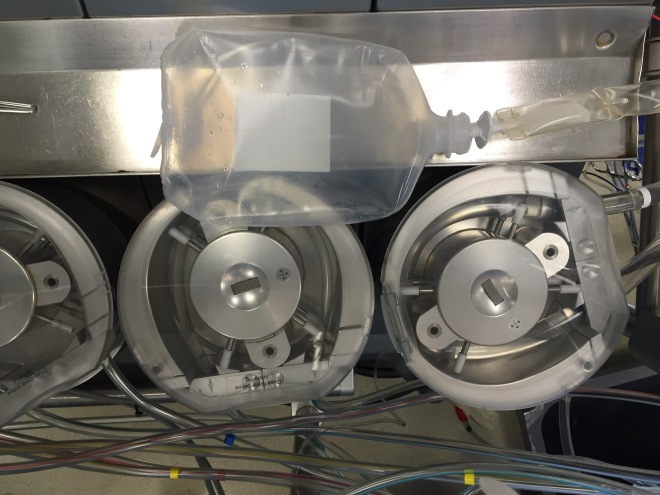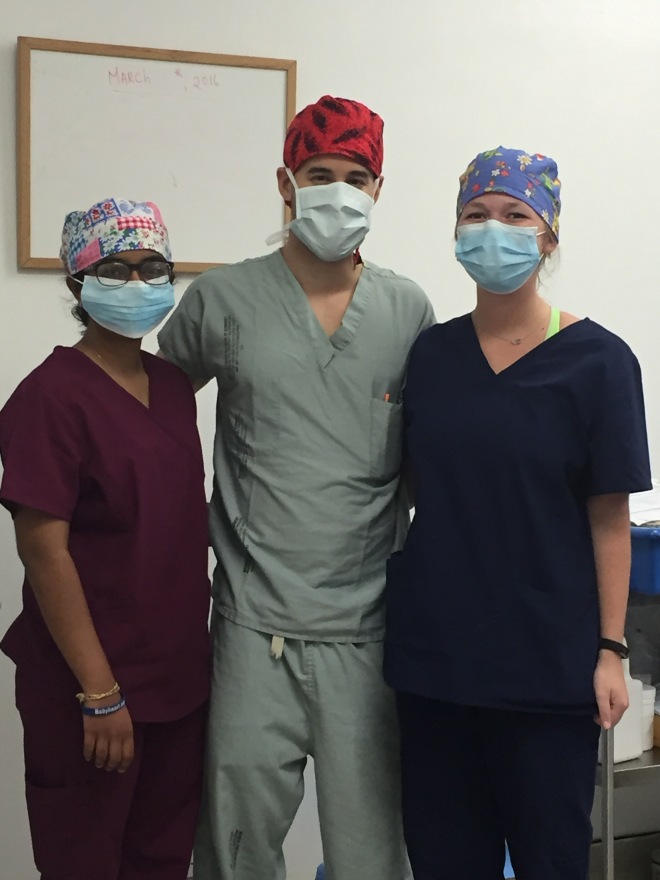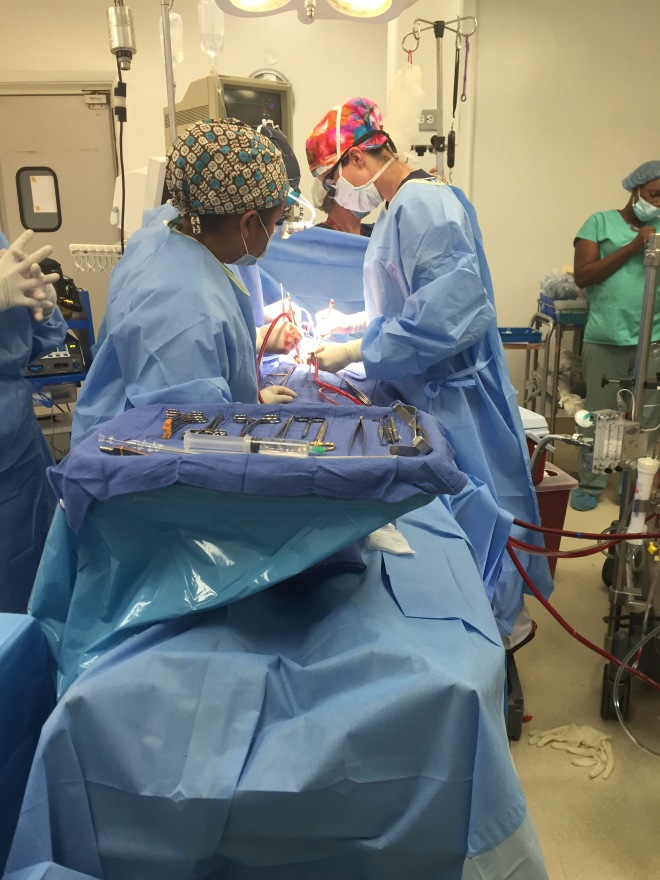Well I broke the cardinal rule in the CICU (cardiac intensive care unit) because tears were shed today when I made my favorite little girl, Tyra (the first surgery patient) smile. I no lie had to hold back tears. I know it doesn’t seem like that big of a deal, but it was her first smile post surgery!!
To explain the cardinal rule of the CICU, crying for patients is not healthy for many reasons and it’s nothing to do with the fact that it might give someone a headache. Crying increases the myocardial workload (workload of the heart), oxygen consumption, and the systemic/vascular resistance; which are all things that need to be maintained at a certain level.
Anyways, update on the patient from last night. Like I said, normal oxygen saturation is 100, but for this little guy, he was at 40. The surgery helped raise his saturation a little bit and a normal range for him would be around 75. When we got here this morning, his saturation was 65, so they loaded him with as much oxygen as they can give him. One of the tools they use to maximize the amount of oxygen given is called an optiflow. An optiflow is sort of like a nasal cannula but can give higher amounts of oxygen flow, and we were able to provide him with 15 liters of oxygen, which can’t be given normally through nasal cannulas. Optiflows also sometimes produces a CPAP (continuous positive airway pressure) which is a treatment that uses mild air pressure to keep the airways open. He’s been having a lot of trouble throughout the day, so please keep him in your prayers and pray that he gets better.
Because of the setback yesterday with the cath patient, they were only able to do one scheduled surgery and one emergency surgery. Today’s first surgery was on a 14 year old girl with TOF (tetralogy of fallot). Basically, this means she has four related heart defects that commonly occur together: VSD, some form of pulmonary artery obstruction (stenosis, atresia/which causes some of the blood to back up into the right ventricle), an overriding aorta, and a hypertrophic right ventricle (the right ventricle is overworking to compensate for the overriding aorta). Instead of going in and fixing all four things (which would be very complicated), they just cleaned out the RVOT (right ventricle outflow tract) and inserted a patch on RVOT to make it bigger (it was 8 mm and they made it 18mm) and to also help the branching pulmonary arteries to grow. They dilate the vessel to create a clean shot in the RVOT, which allows more blood to flow to the lungs. They want to wait to repair the VSD because the lungs have been used to receiving a certain amount of blood (a small amount because the vessel has been pretty narrow), and if the lungs can’t handle recieving a lot more blood, then the VSD allows for some of the blood to flow from the right ventricle to the left atrium. The surgery went well and we left right as she got back from the OR.
Today I got to go into the OR for a little bit and asked Dr. Thomas (our perfusionist) about the heart lung machine. He did a great job explaining it, and I will do my best to reiterate what he said, but don’t hold me to it. Basically the deoxygenated blood from the right atrium bypasses the right ventricle, pulmonary artery, lungs, left atrium, and left ventricle, and goes straight to the aorta. All of the blood from the body circulates through this machine. The machines specific tubes, “turn table” looking things, and apparatuses both act as all of the body parts that were bypassed. Side note: it clicked finally that it’s called heart lung bypass because the machine literally acts as the heart and lungs and bypasses the actual heart and lungs. In my opinion, the whole heart lung machine looks like turn table and Dr. Thomas is the DJ. So maybe he should go by DJ Thomas, but that might be unprofessional.. I don’t know.
 The turn tables
The turn tables
 Above is a drawing he did when he was explaining the machine to me. I don’t know if it help you, but if it, doesn’t there’s Google for that
Above is a drawing he did when he was explaining the machine to me. I don’t know if it help you, but if it, doesn’t there’s Google for that

The left “disk” represents the blood flow that would be in the chambers that are being bypassed. The right “disk” represents the blood flow from kidney. The machine circulates the blood by turning the knobs at the bottom, which determines how fast it circulates. The blood leaves the right “disk”, goes to the part of the machine that represents the lungs, and returns oxygenated to the left “disk”. All the other “disks” are for any extra blood that is circulation. The talk about DJs got me sidetracked so I researched DJs and if you would like to know more about their history, here ya go: DJ Thomas
An iSTAT (pictured below) is used to test the blood gasses. I was sent from the ICU to the OR four times and was told to run (I ran three reasons, one because I didn’t want to blood to clot, one because I won’t be working out for the next two weeks, and one for the dramatics).

This is what I thought everyone else was thinking:
“Everyone is looking at me and thinking, wow she must be important. She’s in scrubs, scrub cap, and face mask. Running. She’s definitely important. Probably about to go save someone’s life. Yep. For sure about to save someone’s life.”
This is what actually was going through their head:
“Who is this girl and why is she running?? She looks rather awkward. What is she doing here? Is she old enough to be a doctor?”
Back to the point, blood gasses are taken to test for three reasons: ventilation, oxygenation, and perfusion. For ventilation, they want to see how well oxygen is getting into your lungs (aka testing your breathing). For oxygenation, they want to see how well your oxygen is binding to your red blood cells (RBC). And for perfusion, they want to see how well the oxygenated RBCs are flowing to the rest of the body.
Enough with the medical talk. I’m done for the day. Here are some pictures I took today.

Look mom!!! I made friends!!! These are the two other pre med students on the trip, but I will not be disclosing their names for their own privacy (Jk)

***WARNING: the next video contains blood, so if you are going to pass out please don’t watch***
FYI: I ate this for dinner tonight: chilli chicken and a side of steamed rice. Apparently in India, a side=family size portion


